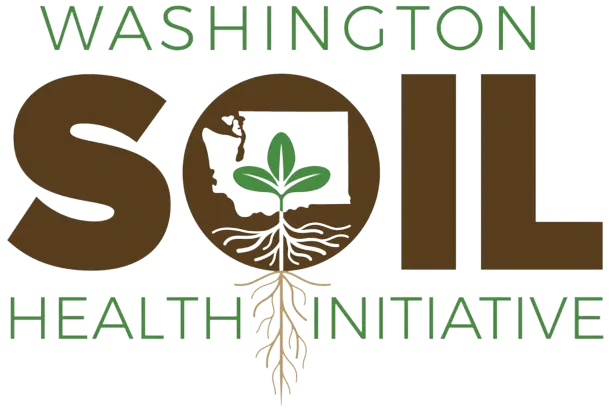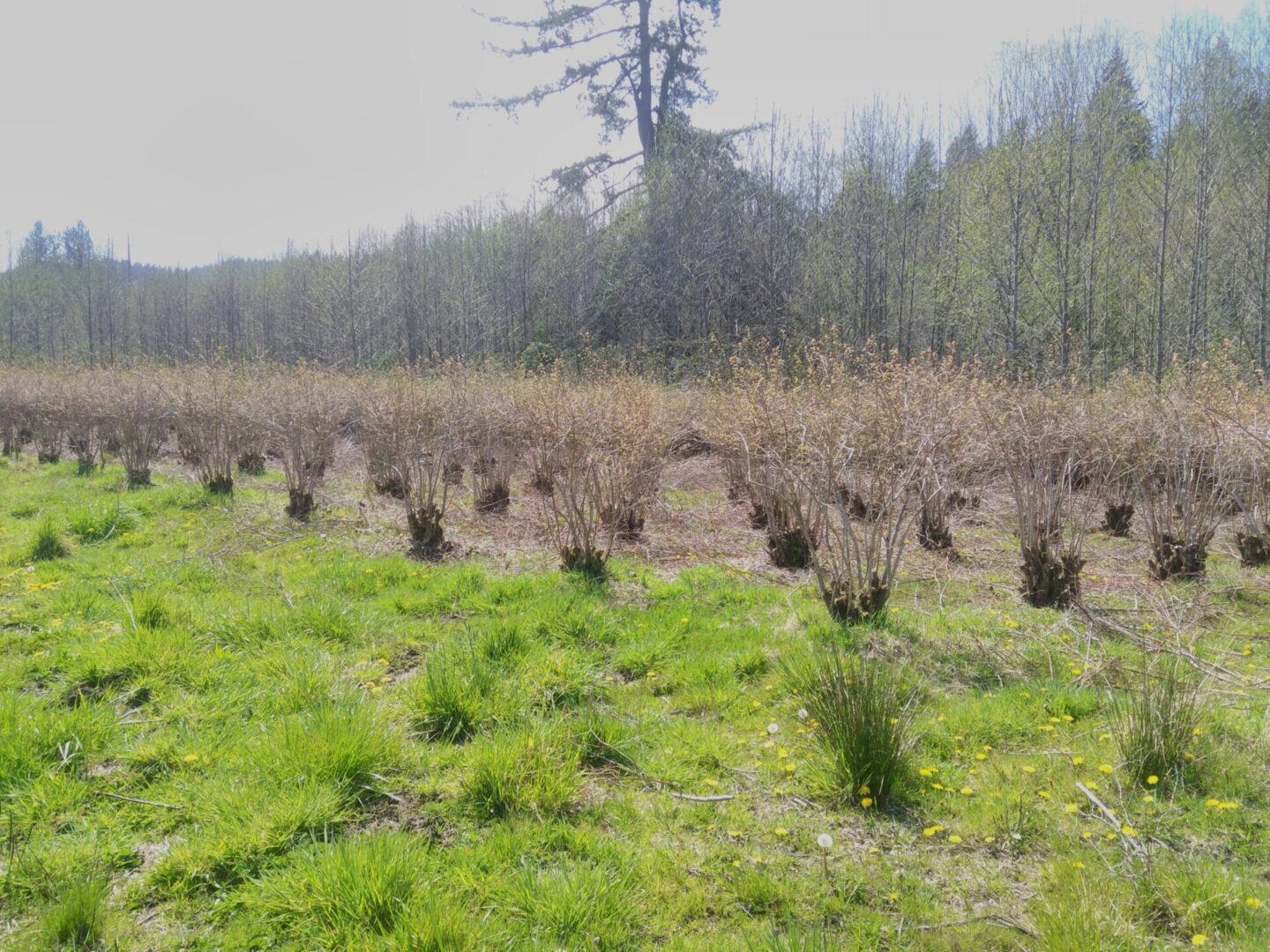
Compost: Saving Soil Health, One Pile at a Time
With funding from the Sustainable Farms and Fields Program, Four Elements Farm applied high rates of compost to their fields to build soil health
April 11, 2024
Author: Katie Nelson
Unearthing the Effects of Soil Health Neglect
Picture this: a plot of prime farming land with a riparian buffer, tucked away just south of Puyallup and Sumner, WA. Since 1903, this land has been the host for many different crops. Pumpkins? Check. Flower bulbs? You bet. Even Christmas trees and cattle had their moment in time on this land. But amidst all this action, there's been a silent victim: the soil. Over the years, it's been an afterthought, and its health has slowly eroded away.
Fast forward to 2016, enter Amy and Agustín Moreno-Sills, the new stewards of the 52.52 acres now known as Four Elements Farm. The Moreno-Sills have since cultivated a farm with a wide variety of organic vegetables along with organic blueberries, some of which are 70+ years old! Some of the main objectives that the Moreno-Sills wanted to address as the new farmers of the land were efforts towards building soil health to both increase the productivity of their crops and protect natural resources, like the salmon-bearing Ball Creek, a tributary of the Puyallup River, that runs along the border of Four Elements Farm.



Through working with Alison Nichols, the Crop Farm Manager at the Pierce Conservation District, the team strategized how to rebuild the soil health of their land from the ground up. Soil testing confirmed that the land was severely depleted of nutrients and organic matter to the point where not even a cover crop could be grown. As a result, the Moreno-Sills collaborated with Pierce Conservation District to rehabilitate a 5-acre parcel with amendments, compost, and a cover crop. The results were encouraging, as the combination of both amendments and compost enabled the growth of cover crops in their soil! But with the district’s limited available cost share funding, replicating the project for the farm’s remaining acres was not possible.
From Grants to to Growth: Funding Farm Soil Restoration
Then came a beacon of hope: Sustainable Farms & Fields (SFF) funding stepped into the picture. This grant program, funded by the Washington State Conservation Commission, was designed to help farmers implement climate-smart practices and projects to boost soil health, increase carbon sequestration, and reduce greenhouse gas emissions. With aid from Pierce Conservation District cost share and SFF funding combined, over fifty-thousand dollars were used to make the dream of soil rehabilitation a reality.
The secret ingredient? Compost, and lots of it. Imagine the equivalent of 20 semi-trailers filled to the top with compost! That’s exactly what the Four Elements farmers saw on the compost delivery day. Across the 50 acres of Four Elements Farm, 1750 yards of organic, nutrient-rich yard waste compost was spread. The compost was sourced from Cedar Grove, a local environmental solutions company that composts organic and yard debris for bulk purchase.
Compost: The Secret Ingredient
The application of high-quality compost onto fields can have outstanding benefits for crops. For example, compost improves the soil's ability to hold nutrients and increases nutrient availability. By increasing the soil’s cation exchange capacity (CEC), the soil is better able to retain nutrients like nitrogen, phosphorus, and potassium. Then, these nutrients are available for plants to use for their growth and development. Furthermore, compost can boost nutrient availability and uptake and thus, may increase crop yields (US Composting Council).
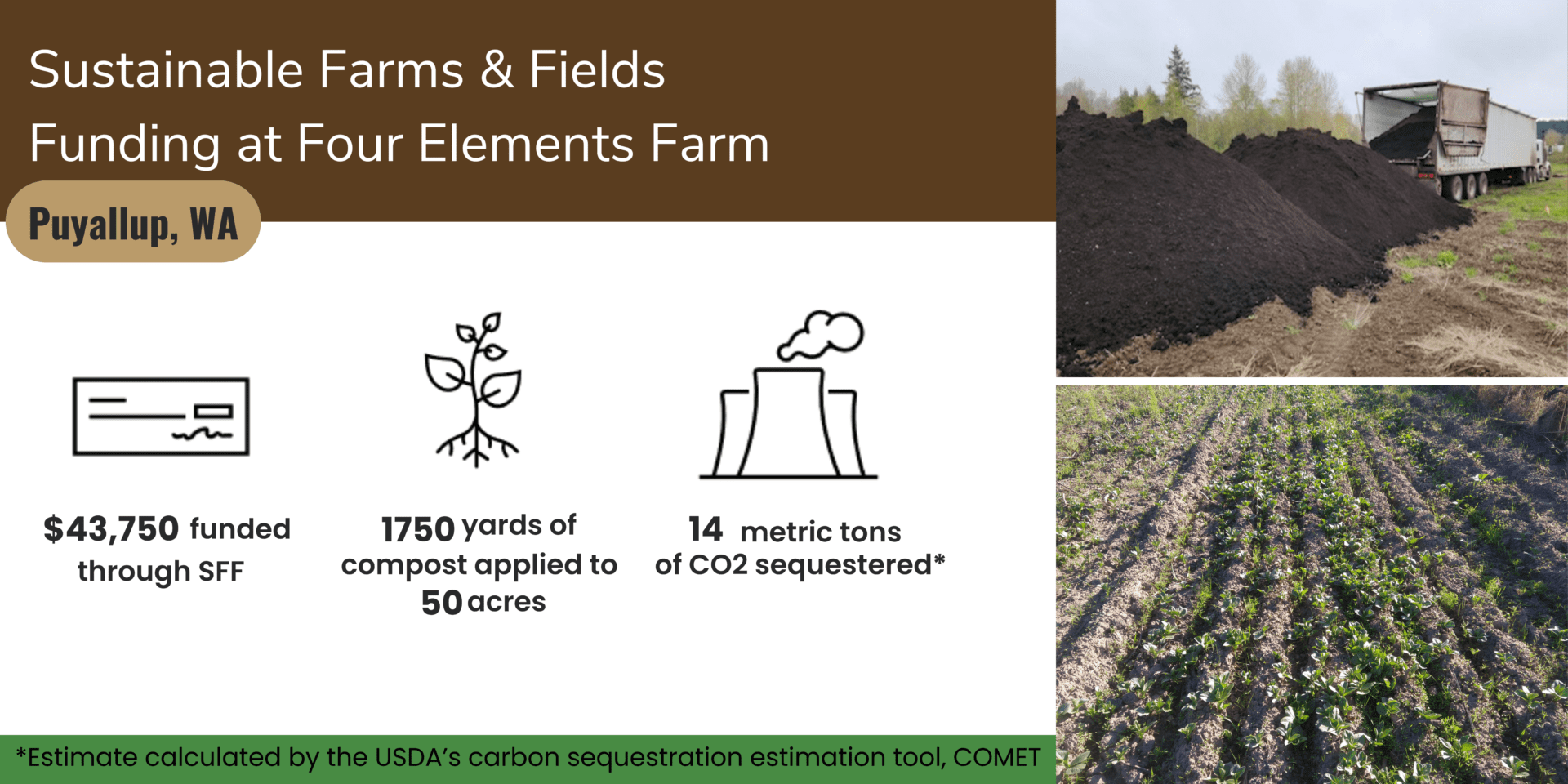

But it's not just the farm that the compost is helping. The effects of compost application have a host of benefits for the local environment. For example, compost plays a vital role in closing the nutrient loop within the agricultural system. The ongoing demand for phosphorus and nitrogen fertilizers presents significant sustainability challenges concerning the long-term availability of these nutrients and the environmental impacts associated with their industrial production processes, as well as the potential for nutrient pollution.
Mainly, most global phosphorus fertilizer production relies on mining from limited rock phosphate deposits, risking its sustained availability for long-term use. Moreover, the energy-intensive industrial methods used in nitrogen production have been linked to adverse climate impacts (Yorgey, 2014). Closing the nutrient loop involves the recovery of nutrients from sources such as wastewater treatment facilities and food processing plants, subsequently recycling them into cropping systems. This approach aims to increase the quantity of recycled nutrients, thus establishing a more self-contained system.
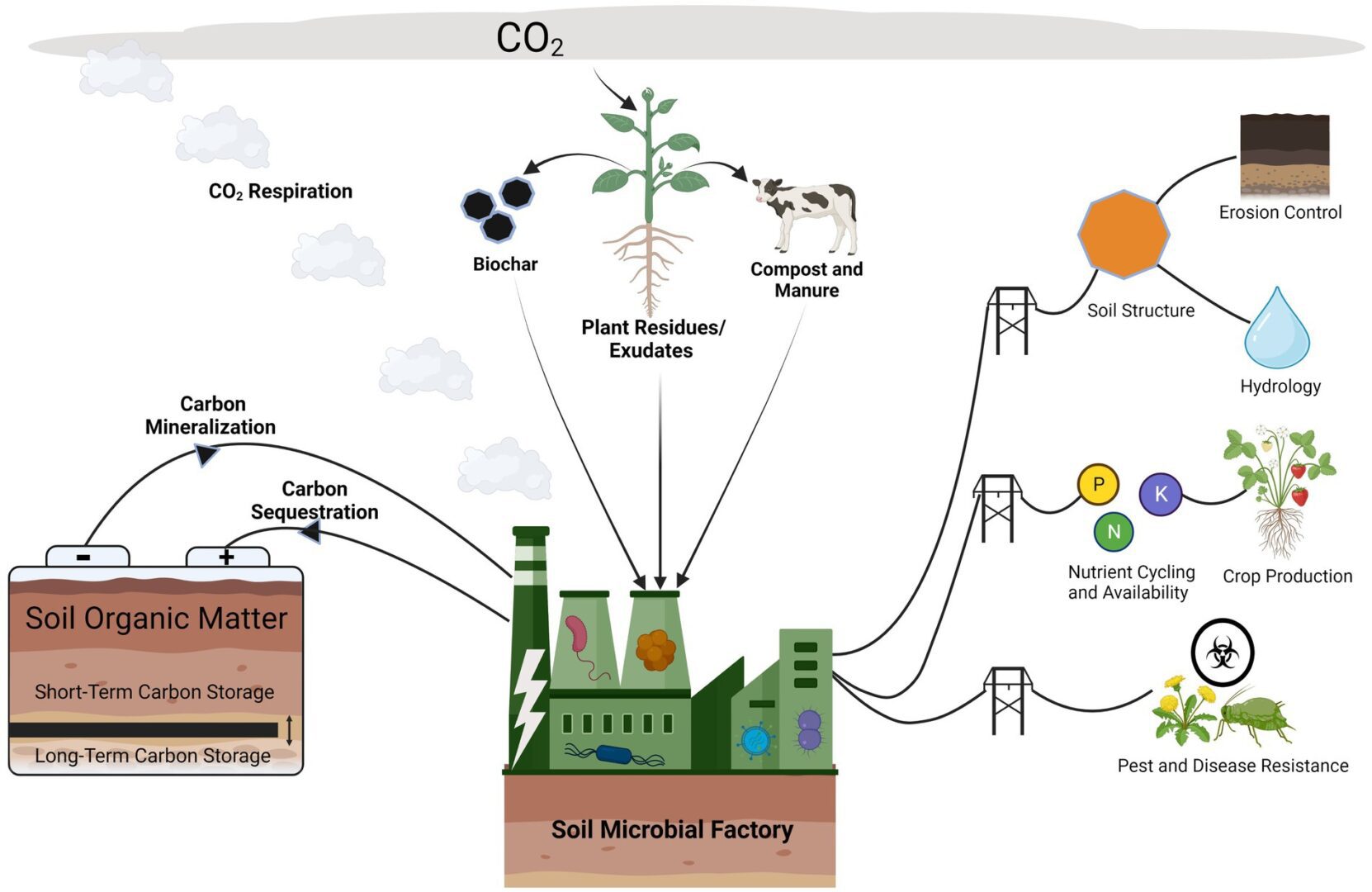

For soil health and the climate
Through COMET, the United States Department of Agriculture’s (USDA) carbon sequestration estimation tool, approximately 14 metric tons of CO2 were sequestered through compost application process at Four Elements Farm. One study completed in Northern California showed evidence that one application of compost could start a chain reaction of carbon sequestration that will persist over decades (Ryals et al., 2015).
Without the SFF funding, this project would not have been possible, and there are many additional farmer and conservation district collaborations just waiting for an investment through this exciting new funding resource.
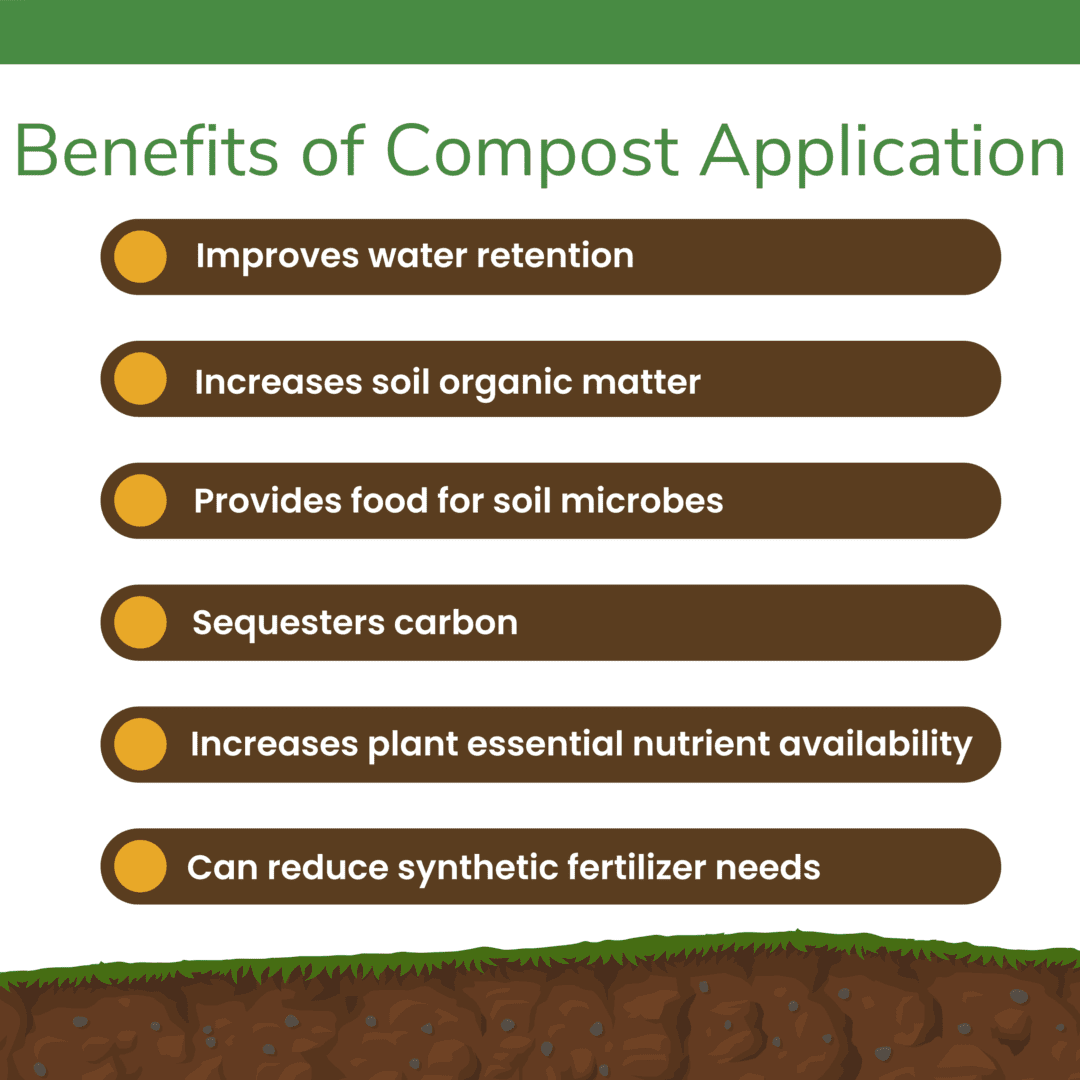

The dedication and ingenuity of our region’s farmers and local extension support are the perfect match for the investment of state funds through SFF. The process of restoring soil health and resiliency has no quick fixes. Instead, it is an iterative process that requires continuous attention and sustainable practices. But with some funding help and a whole lot of compost, Four Elements Farm is on the road to recovery — and the soil couldn't be happier.
To learn more about the Sustainable Farms and Fields Program or to find your local conservation district, visit the Washington State Conservation Commission Website.
Additonal reading about the benefits of compost application:


Katie Nelson
Katie is a Farm and Habitat Specialist at the Pierce Conservation District, contributes to habitat improvement through helping plan and maintain floodplain restoration projects and advocates for best management practices within her local farming community.
This article was published by the Washington Soil Health Initiative. For more information, visit wasoilhealth.org. To have these posts delivered straight to your inbox, subscribe to the WaSHI newsletter. To find a soil science technical service provider, visit the Washington State University Extension website or the Washington State Conservation District website.
